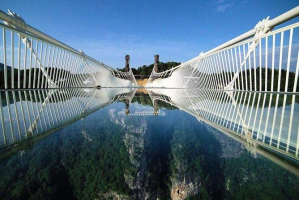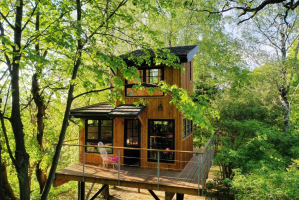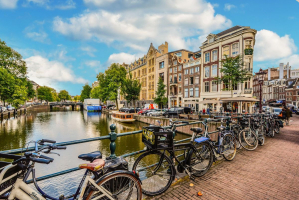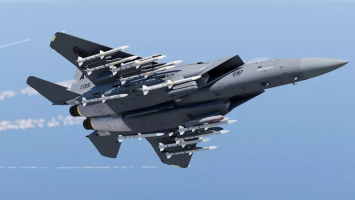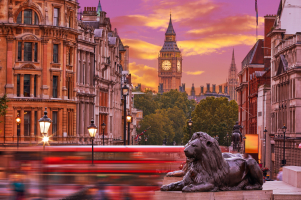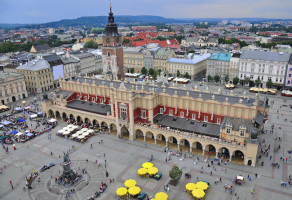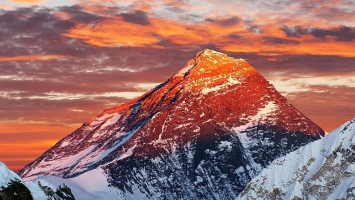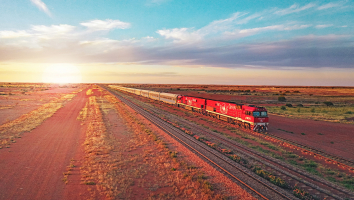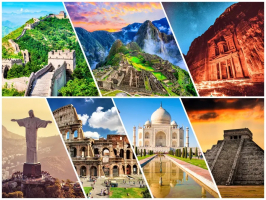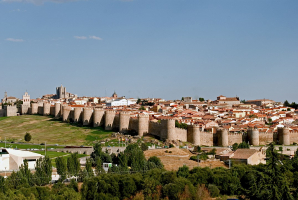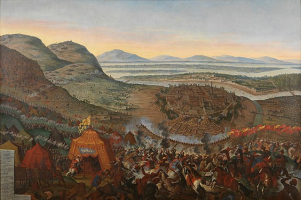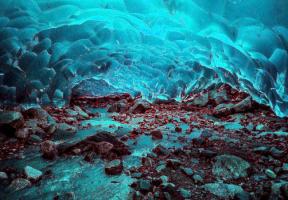Top 15 Most Amazing Ancient Ruins of the World
It's simple to become mired in our daily routines and lose sight of the past. But some wonderful historical remains serve as a reminder of how intriguing our ... read more...history is. There are a ton of intriguing historic ruins across the world, from towns in disrepair to temples that have endured the test of time. Numerous of these prehistoric communities were very inventive and progressive. Here are the most amazing ancient ruins of the world.
-
The Pyramids of Giza in Cairo are among the most enigmatic historic structures on Earth. Many theories exist on how these gigantic tombs, erected during the Fourth Dynasty of Ancient Egypt, were constructed. They represent yet another amazing architectural achievement by the ancient Egyptians with such minute and flawless workmanship. Many people actually think they were created by angels or even aliens. All three of the major pyramids accept payments for admission. Over the years, tomb robbers have targeted these structures because they were utilized as burial chambers and were filled with valuables the Pharaoh might use in the afterlife.
Don't forget to take a picture with the Sphinx while you're kissing her; it's almost required. There are several other lesser-known tombs, temple ruins, and pyramids worth seeing on the nearby desert plateau for those wishing to get away from the worst of the crowds. The Giza Plateau, home to some of the most remarkable ancient monuments in the world, including a complex of ancient Egyptian royal tombs and religious buildings including the Great Sphinx, the Great Pyramid of Giza, and a number of other sizable pyramids and temples, is the most well-known feature of Giza. Due to its proximity to Memphis, the former pharaonic capital of the Old Kingdom, Giza has always been a key place in the history of Egypt.
Location: Cairo, Egypt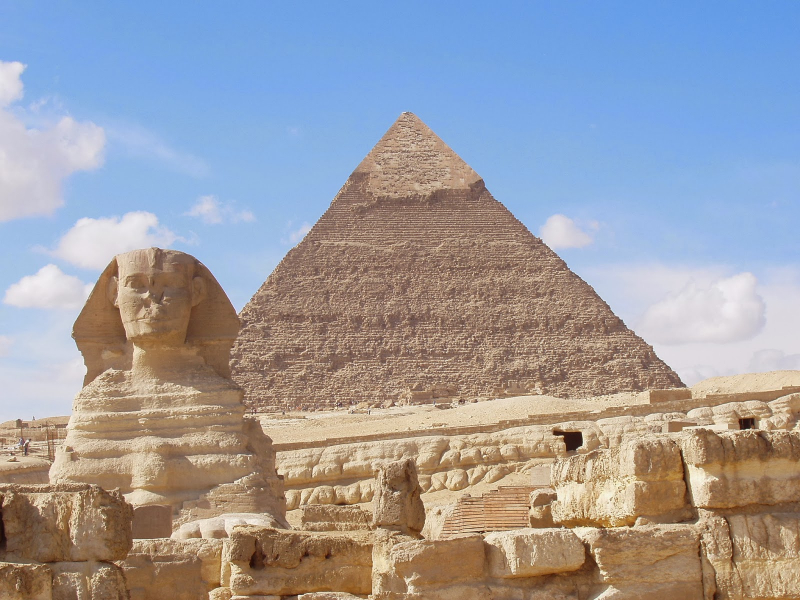
blogspot.com 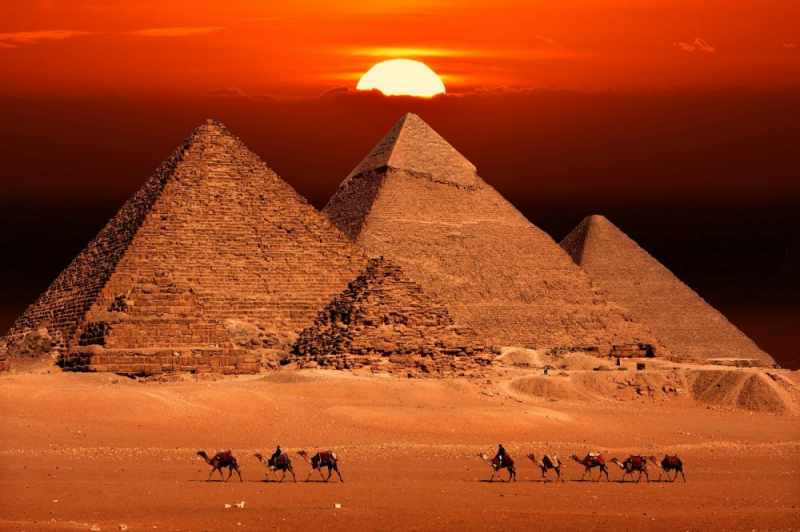
japaneseclass.jp -
Angkor is a translation of the Sanskrit word "nagara," which meaning "city". It was a prosperous ancient metropolis that served as the Khmer Empire's capital between the ninth and fifteenth centuries. Today, Angkor is most known for the Hindu Angkor Wat Temple, which holds the record for being the biggest place of worship on Earth. It is renowned for being visited around daybreak because of the stunning sunlight above the temples. Apart from Angkor Wat, the Angkor Archaeological Park has a lot more amazing site. The woodland, rice fields, and farmlands are home to more than 1,000 temples. Highlights include the mystical and jungle covered Beng Mealea Temple, which has an early library and exquisite sculptures, and the Bayon Temple, which dates to the 12th century and is at the geographic center of the ancient city of Angkor Thom.
In the Siem Reap Province, close to the present-day city of Siem Reap, the Angkorian remains are scattered among farms and woods to the north of the Great Lake and to the south of the Kulen Hills. Over a thousand temples may be found in the Angkor region, ranging in size from unremarkable strewn-about brick ruins amid rice fields to the Angkor Wat, said to be the biggest single religious structure in the world. The majority of the temples at Angkor have undergone restoration, making them the most important example of Khmer architecture. Nearly two million people visit each year, and the entire region—including Angkor Wat and Angkor Thom—is protected as a UNESCO World Heritage Site. The ruins' preservation faces several difficulties as a result of the site's popularity with visitors.
Location: Siem Reap Province, Cambodia
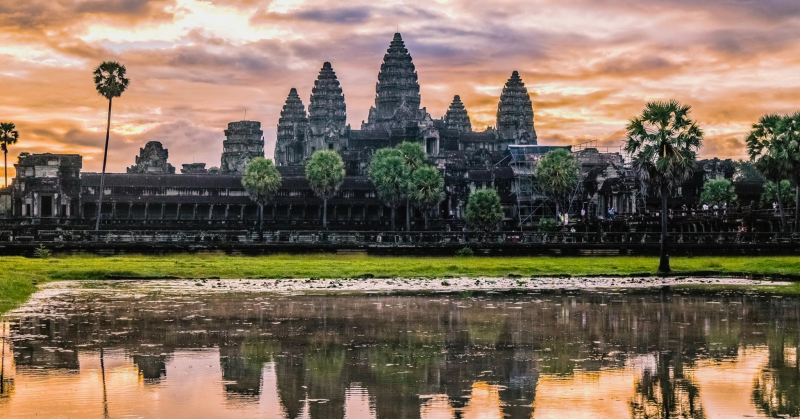
danflyingsolo.com 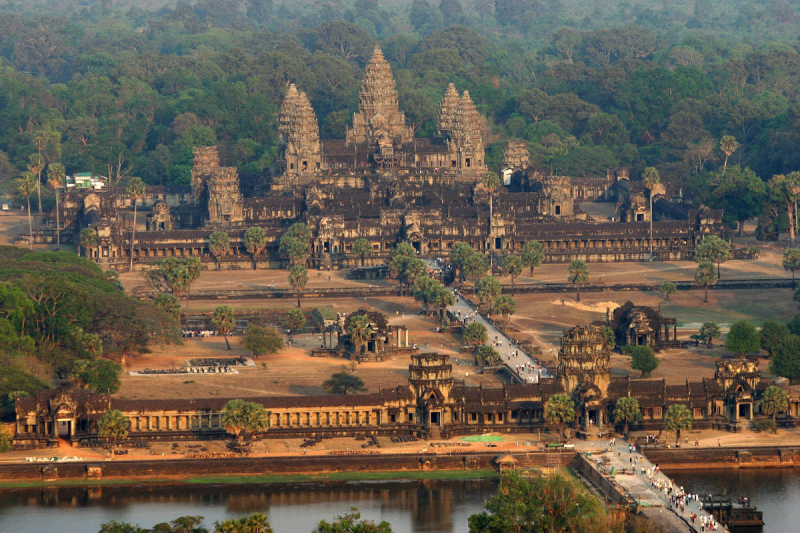
History -
Machu Picchu, one of the most well-known towns of the old Incan Empire, is a major item crossed off the list of places to see. The Peruvian highlands conceal this ancient fortification. In fact, it was so securely disguised that when Spanish conquerors arrived in the 1500s, they never discovered it. They weren't discovered until 1911 by an adventurer named Bingham, and even that discovery was unintentional. He was really tracking Vilcabamba, another city. A marvel of modern architecture, 60% of the building was likely built below, mostly for drainage and defense.
In contrast to the Maya, the Incas had no written language, and as far as is known, no Europeans visited the site before the 19th century. As a result, there are no records of the site's use in writing. On the basis of physical evidence, such as graves at the site, modern archaeologists have created the names of the structures, their alleged purposes, and their people. Machu Picchu was constructed with polished dry-stone walls in the traditional Inca manner. The Intihuatana, the Sun Temple, and the Room of the Three Windows are its three main buildings. The majority of the peripheral buildings have been rebuilt to better convey their historical appearance to tourists. Today, these walled ruins can only be reached by foot or by train. Don’t miss the secret Machu Picchu Museum for an insider’s look into the Lost City of the Incas.
Location: Eastern Cordillera of southern Peru
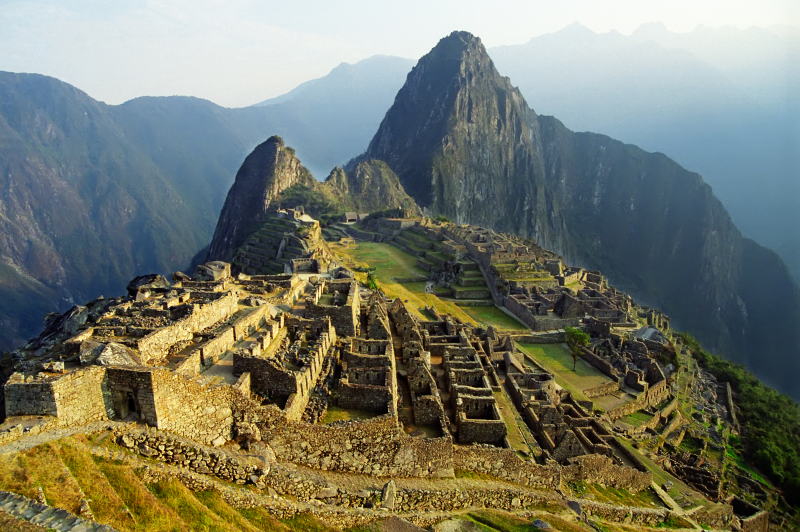
intosouthamerica.wordpress.com 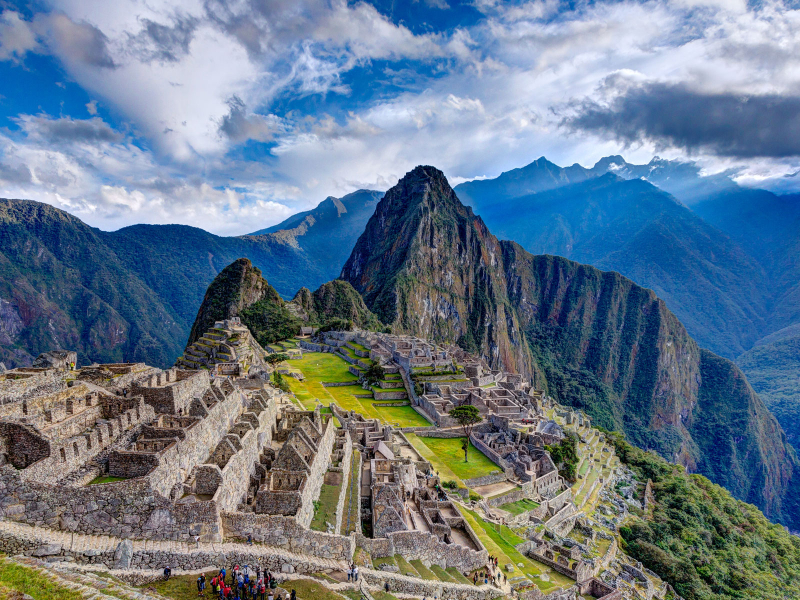
vivaperutours.com -
Petra is an ancient city in southern Jordan that was originally called Raqmu or Raqm by its locals. In a basin surrounded by mountains that forms the eastern flank of the Arabah valley, which runs from the Dead Sea to the Gulf of Aqaba, it is next to the peak of Jabal Al-Madbah. As far back as 7000 BC, people have lived in the region around Petra, and as early as the 4th century BC, the Nabataeans may have founded what would eventually become their kingdom's capital. Only Nabataean presence evidence from the second century BC onwards has been uncovered by archaeology, by which time Petra had been their city.
Instead, abandoned caverns, temples, and tombs buried inside the city walls may be found by taking a stroll, camel or donkey ride among the Petra ruins. One of the most stunning sights in the ancient city is the two-story Treasury cut into the rock face. Even only the outside is worth seeing, but the interior with its Indiana-Jonesy royal tomb is quite interesting. Up to 95% of the ancient city of Petra has not yet been fully explored. The Nabataeans made a significant profit from their trade, and Petra was where they concentrated their wealth. The Nabataeans were able to stave off invasions by taking advantage of the area's rocky environment since, unlike their attackers, they were used to live in the desolate deserts.
Location: Ma'an Governorate, Jordan
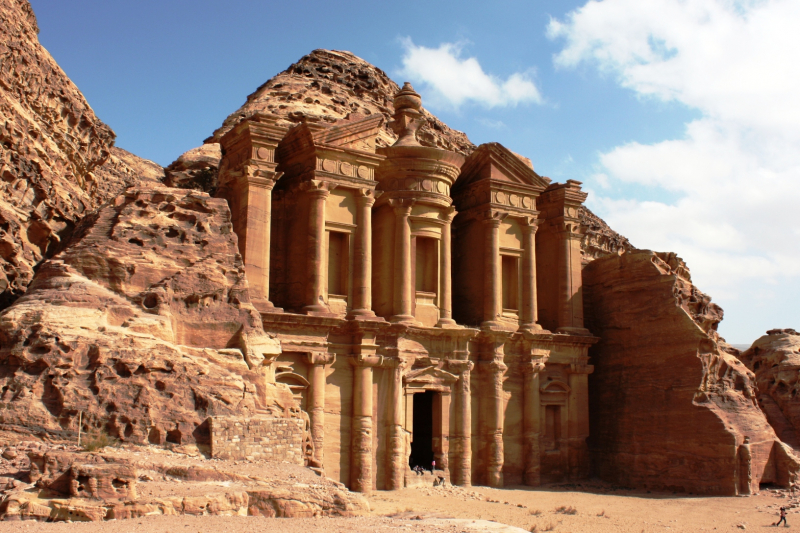
thousandwonders.net 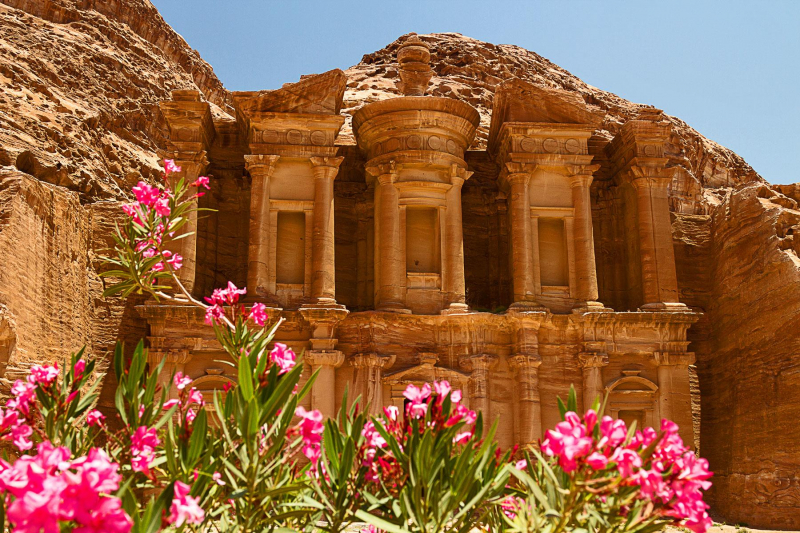
Fodor's -
The Great Wall of China, the longest man-made barrier in the world, spans 15 Chinese provinces, principalities, and autonomous territories. It was constructed throughout the period of six Chinese dynasties as a fortification against invaders and is made up of many individual portions of walls and moats. Some of the wall's remaining pieces are in ruins and are now well over 2,000 years old. It's interesting to note that it would take a person around 18 months to traverse the whole length of the Great Wall of China. As early as the 7th century BC, certain walls were constructed. Qin Shi Huang, the first emperor of China (220–206 BC), later added certain portions. The Qin wall is largely gone.
Later, other succeeding dynasties constructed and kept up numerous sections of boundary walls. The Ming dynasty constructed the wall's most well-known parts (1368–1644). In addition to providing protection, the Great Wall served additional objectives such as enforcing border laws, allowing taxes to be levied on commodities traveling along the Silk Road, regulating or promoting commerce, and managing immigration and emigration. The addition of watchtowers, soldier barracks, garrison stations, the ability to signal with smoke or fire, and the fact that the Great Wall's route functioned as a transit corridor all contributed to the Great Wall's increased defensive capabilities.
Location: Northern China
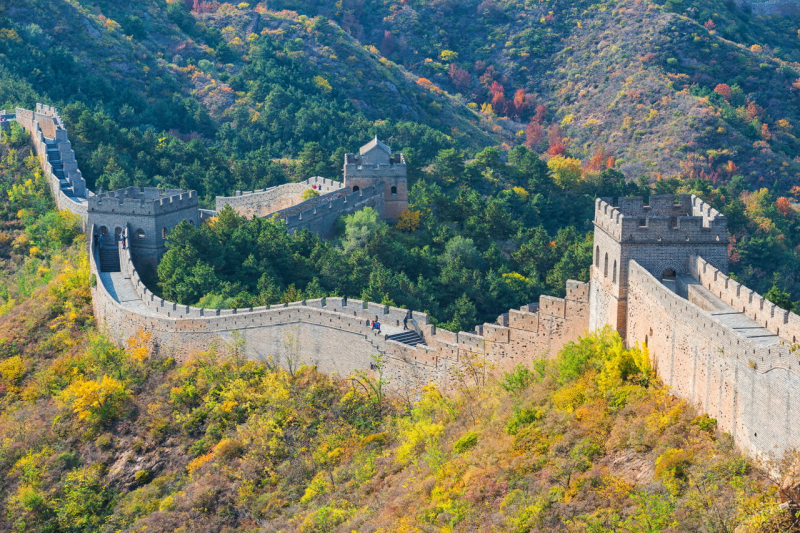
historyplex.com 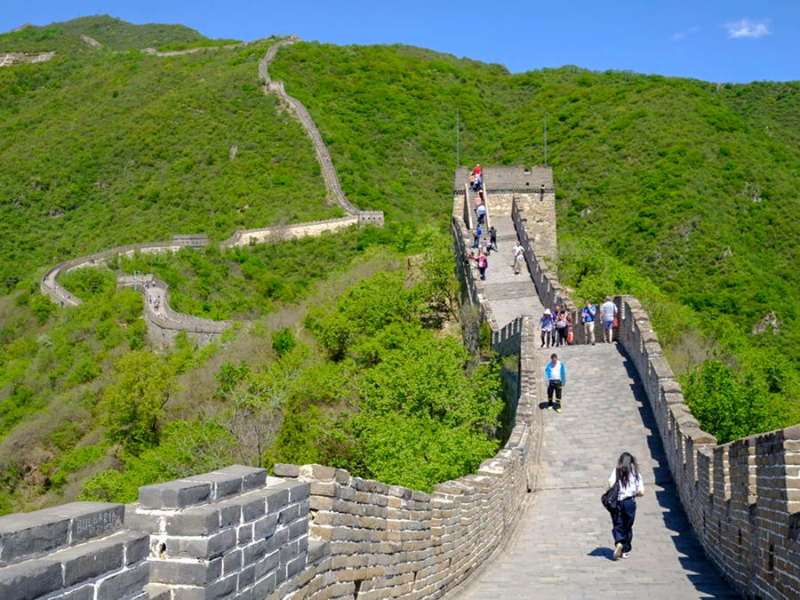
blogspot.com -
The Colosseum was a historical gladiator arena and one of the most recognizable Roman ruins. The 50,000-seat amphitheater, which was unveiled in 80 ADS, hosted a variety of events. These featured bloodthirsty gladiator competitions where participants would fight to the death and animal battles. Even by today's standards, the Colosseum's architecture is remarkable. The three tiers of archways that make up the outside walls are topped with Ionic, Doric, and Corinthian columns. They were adorned with travertine and marble sculptures during their heyday. A large canopy that protected spectators from the weather previously supported the upper level. Today, you have the option of seeing the Colosseum alone or along with the surrounding Palatine Hill and Roman Forum.
In the early medieval period, the structure stopped being utilized for entertainment. Later, it was utilized again for things like homes, workshops, religious order apartments, a castle, a quarry, and a Christian shrine. The Colosseum, one of the New 7 Wonders of the World, is still a recognizable image of Imperial Rome despite being significantly damaged by earthquakes and stone thieves stealing spolia. One of Rome's top tourist destinations, it also has connections to the Roman Catholic Church since every Good Friday, the Pope leads a procession known as the "Way of the Cross" that starts near the Colosseum. The five-cent euro coin for Italy has a picture of the Colosseum.
Location: Regio III Isis et Serapis, Rome, Italy
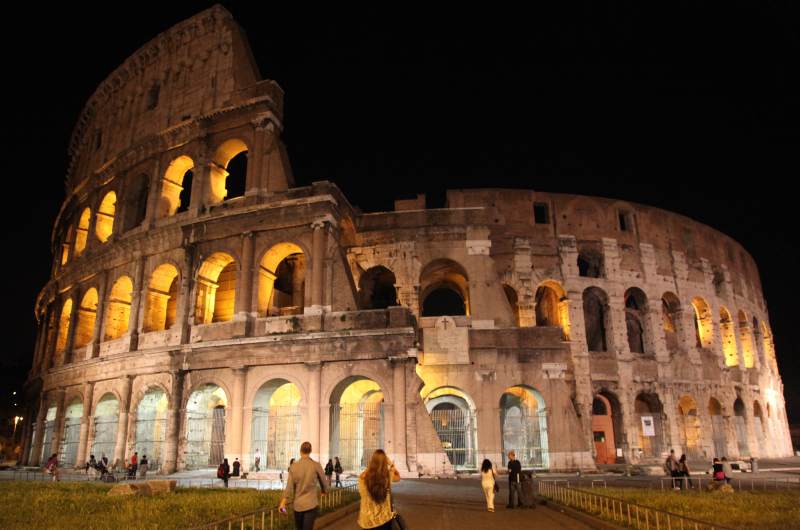
darkrome.com 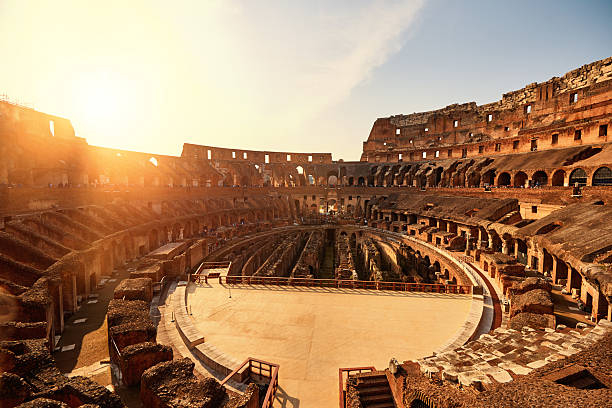
https://www.istockphoto.com/ -
The Moai Statues on Easter Island in Polynesia are famous, with the largest weighing more than 80 tonnes. In fact, even if you've never heard of them, you'll probably be able to identify them from a photograph. Between 400 and 1500 AD, the Rapa Nui people sculpted these more than 800 figures from volcanic ash, the most of which look away from the sea. Each of these massive monolithic figures would have taken close to a year to construct and was probably built using crude basalt stone picks. There are a number of hypotheses as to why they were constructed, including the idea that it would enhance the soil and serve as a method to memorialize significant clan ancestors.
When Europeans arrived on the island for the first time in 1722, the statues were still observing their clan territories from inland, but by the late 19th century, all of them had toppled. In the late 18th and early 19th centuries, the moai were destroyed, probably as a result of interaction with Europeans or internal tribal conflicts. It is regarded as a tremendous artistic and physical achievement that more than 900 sculptures could be produced and transported. The Paro moai, the highest one ever built, was about 10 meters (33 feet) high and weighed 82 tonnes (80.7 tons). The tallest and heaviest moai built was at Ahu Tongariki and weighed 86 tonnes (84.6 tons).
Location: Easter Island
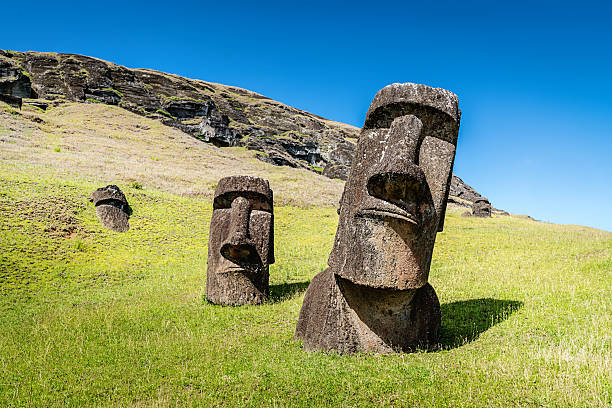
https://www.istockphoto.com/ 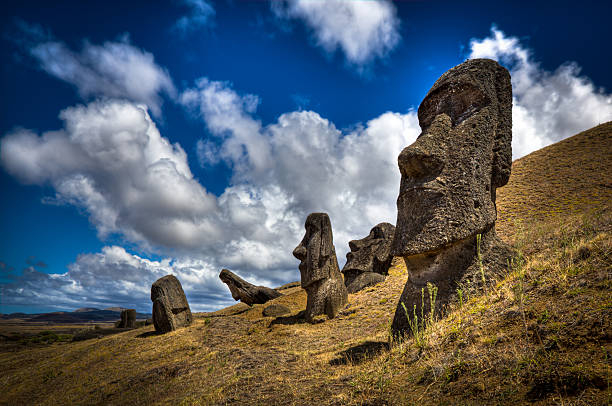
https://www.istockphoto.com/ -
One of the most well-known Aztec archaeological sites is Teotihuacan, which is situated on the outskirts of present-day Mexico City. But it wasn't actually constructed by the Aztecs. Despite many theories, nobody is really sure who did. However, the Aztecs did name it and make it their own when they stumbled across the abandoned city. In its prime, it was the largest city in the Western Hemisphere and home to a plethora of residential compounds and pyramids; some of which were as big as the Pyramids of Giza. Today, its two iconic pyramids, the Temple of the Sun and the Temple of the Moon, are the major highlights. Stroll along the Avenue of the Dead and visit the Citadel and the Temple of the Feathered Serpent.
Around the first century CE, Teotihuacan developed as a religious hub in the Mexican Highlands. It developed into the biggest and busiest city in the pre-Columbian Americas. Apartment complexes with many floors were erected in Teotihuacan to accommodate the vast population. The whole civilisation and cultural complex connected to the site is often referred to as Teotihuacan (or Teotihuacano). While it is debatable if Teotihuacan served as the capital of a sovereign empire, its effect on Mesoamerica is well known. Numerous locations in Veracruz and the Maya area include Teotihuacano relics. Later Aztecs claimed a shared lineage with the Teotihuacanos after discovering these spectacular monuments and modified and adopted certain features of their civilization.
Location: Teotihuacán, State of Mexico, Mexico
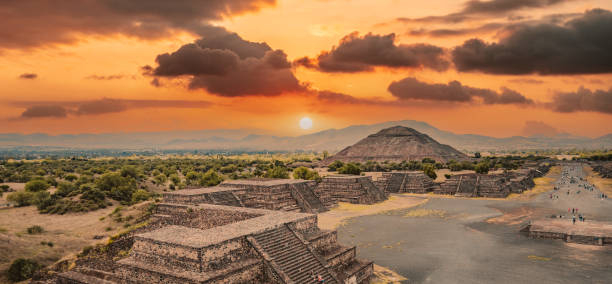
https://www.istockphoto.com/ 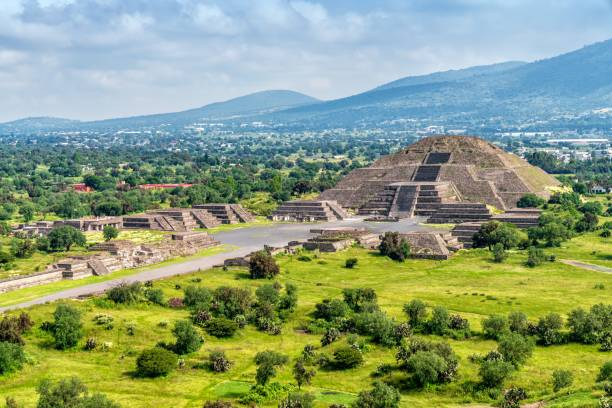
https://www.istockphoto.com/ -
The biggest Buddhist temple in the world is called Borobudur, located in Indonesia. It was built out of an amazing two million slabs of volcanic stone. It dates back to the ninth century and finally fell into ruin before being rediscovered in the nineteenth century. It has since been brought back to its previous splendor and is especially well-liked around dawn. Six square platforms with three circular platforms on top make up the Borobudur monument. The realm of forms, the world of formlessness, and the three levels of the Buddhist cosmology are steps on the journey to enlightenment. It is embellished with more than 2,000 reliefs and 500 sculptures of Buddha, each of which outlines a Buddhist doctrine.
Evidence shows that Borobudur was built in the ninth century and then abandoned after the fall of Java's Hindu kingdoms in the fourteenth century and the conversion of the Javanese to Islam. Sir Thomas Stamford Raffles, the British emperor of Java at the time, was informed of its location by native Indonesians, which led to the spread of information of its presence throughout the world in 1814. Borobudur has now undergone several renovations in order to be protected. Between 1975 and 1982, the Indonesian government and UNESCO undertook the greatest restoration effort, which was followed by the monument's designation as a UNESCO World Heritage Site. The biggest Buddhist temple in the world, Borobudur is one of Southeast Asia's most significant archaeological monuments, along with Angkor Wat in Cambodia and Bagan in Myanmar.
Location: Magelang, Central Java
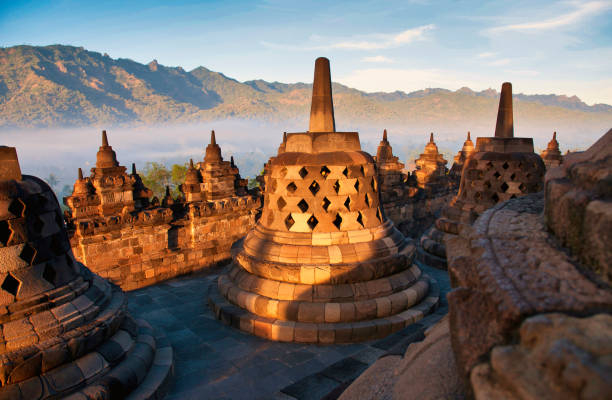
https://www.istockphoto.com/ 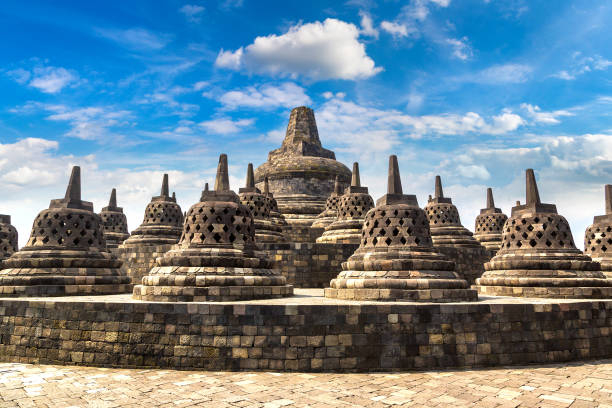
https://www.istockphoto.com/ -
Due to its immense scale, the Karnak Temple complex in Luxor, Egypt, is stunning. There are several temples, sanctuaries, obelisks, and shrines scattered across the region, which is larger than most ancient cities. Each Egyptian pharaoh left their unique architectural stamp throughout the more than 2,000 years it took to construct. The Great Hypostyle Hall is located after passing past the Avenue of Sphinxes. One of the most well-known and popular tourist destinations in Ancient Egypt is this huge space that is surrounded by massive sandstone columns and pylons. Visit the Sacred Lake and the surrounding granite scarab while you're here to view them. It is supposed that if you travel around it seven times, love will find you.
The duration of its development and usage is the primary distinction between Karnak and the majority of the other temples and monuments in Egypt. Temple building began in the Middle Kingdom and persisted through Ptolemaic periods. The buildings were constructed by about thirty pharaohs, which allowed them to grow to an unmatched scale, intricacy, and diversity. Although few of Karnak's individual features are distinctive, the site's grandeur and sheer number of elements are staggering. The gods shown range in adoration from those of the oldest to those who were revered far later in the development of Ancient Egyptian society.
Location: El-Karnak, Luxor Governorate, Egypt
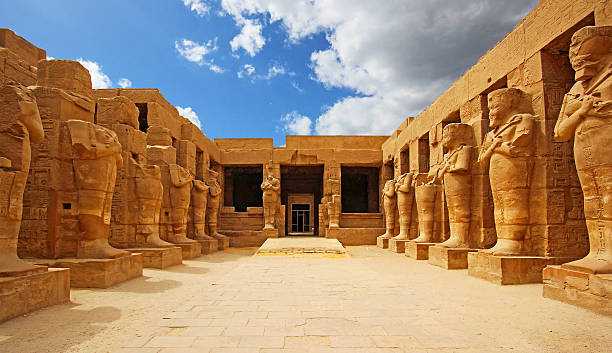
https://www.istockphoto.com/ 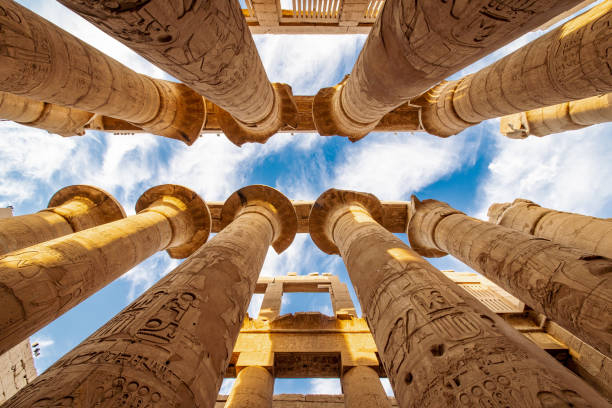
https://www.istockphoto.com/ -
Seeing the ruins of Tikal is a genuinely unique experience because of the way that its grey temple tops stick out from the dense jungle canopy in Guatemala. These far-flung remains, which may be seen as a day excursion from Flores or El Remate, are littered with pyramids, temples, and palaces. Tikal, one of Mesoamerica's greatest archaeological monuments, was once the most important and substantial Mayan city around the year 600 AD. While you're here, don't forget to visit the Temple of the Two Headed Snake. Climbing to the summit of one of the highest pre-Columbian buildings in the Western Hemisphere will reward you with breathtaking 360-degree views of the jungle and beyond.
The conquering state that became one of the most powerful kingdoms of the ancient Maya had Tikal as its capital. Tikal's monumental architecture reached its pinnacle between the years 200 and 900 BC, but it has been around since the 4th century BC. The city ruled over a large portion of the Maya territory during this period in terms of politics, economy, and warfare while engaging with other regions across Mesoamerica, including the enormous metropolis of Teotihuacan in the far-off Valley of Mexico. With a lengthy list of dynastic rulers, the discovery of many of these kings' graves, and analysis of their structures, temples, and palaces, Tikal is the best understood of all the big lowland Maya towns.
Location: Flores, Petén Department, Guatemala
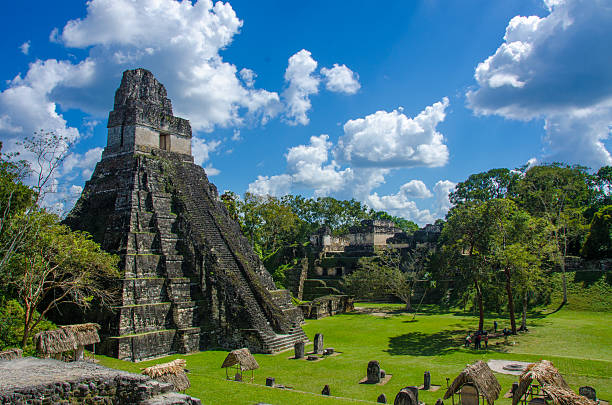
https://www.istockphoto.com/ 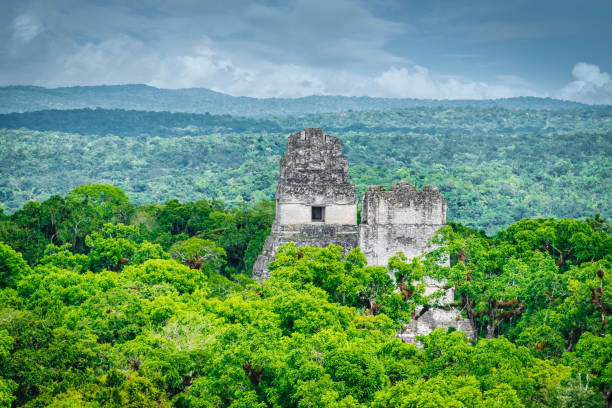
https://www.istockphoto.com/ -
Myanmar's enchanting temple town of Bagan is an age-old metropolis. In its heyday, it contained around 10,000 temples, monasteries, shrines, pagodas, and stupas. This place served as the capital of a significant kingdom during the 11th and the 13th centuries. Since then, natural calamities, negligence, and Mongol invasions have caused these holy places to degrade. There are just 2,000 temple remains left, which are dispersed across the horizon. While it is possible to walk inside the Bagan Archaeological Zone, it is better to view the overwhelming number of temples from above.
The religion dominated Bagan's culture. Bagan's religion was flexible, syncretic, and by norms of the time, unconventional. Theravada Buddhism coexisted alongside Mahayana Buddhism, Tantric Buddhism, several Hindu (Saivite, and Vaishana) schools, as well as indigenous animist (nat) traditions, during the Pyu period. Other traditions persisted throughout the Pagan period at levels never before seen, despite Theravada Buddhism progressively gaining supremacy thanks to royal funding beginning in the middle of the 11th century. Today, Bagan is a popular tourist destination in the developing tourism sector of the nation, which has long been the subject of several boycott efforts. According to several Burmese newspapers, the city's meager tourist infrastructure will need to swiftly grow even to keep up with a minor increase in tourism in the coming years.
Location: Myanmar
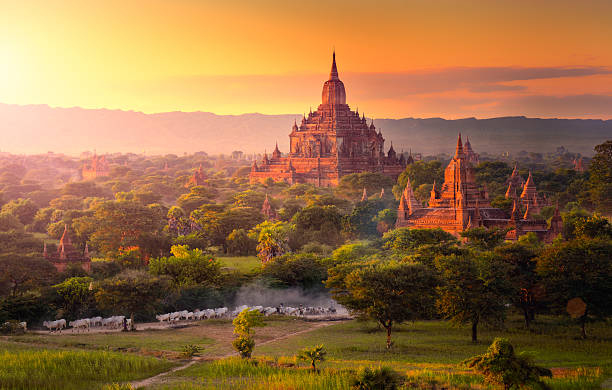
https://www.istockphoto.com/ 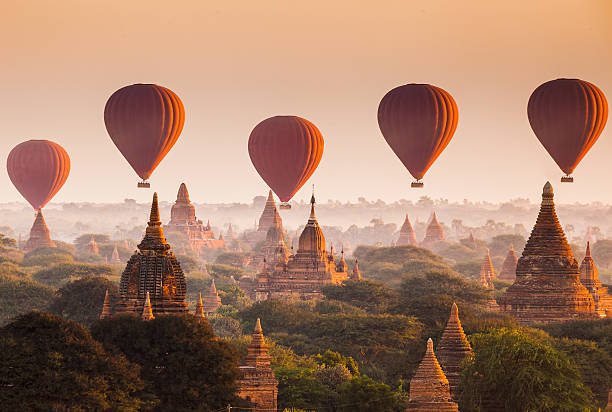
https://www.istockphoto.com/ -
The Acropolis, which is capped by the Parthenon, is visible from every part of the city from its vantage point above Athens. The Acropolis was initially constructed and occupied by Pericles in the fifth century and later developed into a city of temples. These constructions from antiquity were made of metal, Pentelic marble, and occasionally even gold plating. Scaffolding is still in place since restorations are still being done, so don't be startled. This is worth seeing while you're here because the Acropolis Museum now houses many of the original antiquities. It is better to visit the Parthenon early in the morning or late at night because it stands in the blazing sun. Additionally, this is the least crowded time.
The Parthenon, the Propylaea, the Erechtheion, and the Temple of Athena Nike are among the structures whose current remains are the most significant ones at the site. Although there is evidence that the hill was inhabited as far back as the fourth millennium BC, Pericles oversaw their construction in the fifth century BC. When gunpowder stored in the Parthenon was struck by a Venetian bombardment and detonated during the 1687 siege by the Venetians during the Morean War, the Parthenon and the surrounding buildings suffered severe damage.
Location: Athens, Attica, Greece
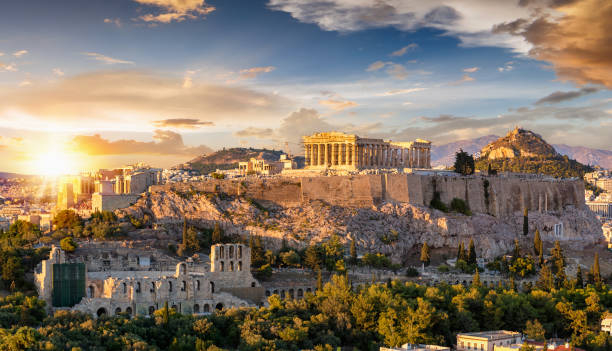
https://www.istockphoto.com/ 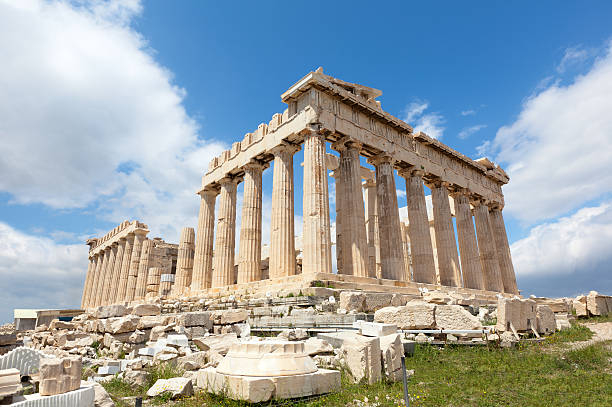
https://www.istockphoto.com/ -
On the Yucatan Peninsula, Chichen Itza, one of the most well-known archaeological sites on Earth, was once a vibrant pre-Hispanic metropolis. It was destroyed in 1221 when Mayapan became the new capital after the Mayans had constructed it about 600 AD. Highlights include the Temple of Kukulkan, a massive stone pyramid with 365 steps for every day of the year and four staircases that depict a compass. The equinoxes in spring or fall are the greatest times to visit since the sun illuminates the pyramid's staircases.
The Temple of the Warriors, the Maya Ball Court, the Wall of Skulls, and the Sacred Cenote, where human sacrifice used to take place, are a few other must-see locations. Chichen Itza is best visited in the early morning or right before closing because it is constantly packed. One of the biggest Maya cities, Chichen Itza was probably one of the legendary great cities, or Tollans, that were mentioned in later Mesoamerican literature. The city may have possessed the most ethnically and racially diversified population in the Maya civilization, which may have led to the site's diversity of architectural styles. Chichen Itza is one of the most visited archeological sites in Mexico with over 2.6 million tourists in 2017.
Location: Yucatán, Mexico
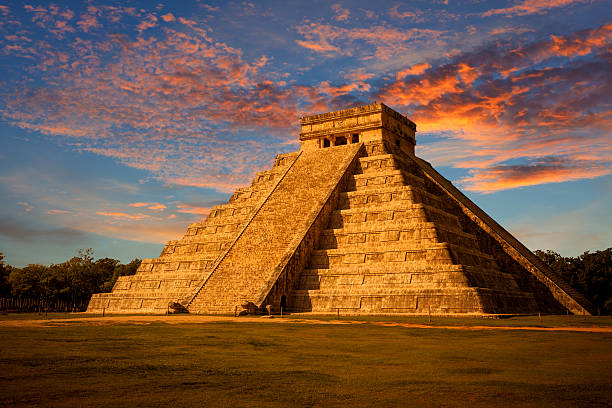
https://www.istockphoto.com/ 
https://www.istockphoto.com/ -
Thousands of life-size warriors and horses make up the stunning Terracotta Warriors, commonly referred to as the Terracotta Army. 600 subterranean pits from the third century BC are found at Xi'an, China, close to the mausoleum of Qin Shi Huangdi. When residents dug for a well point in the 1970s, they unintentionally found them. Three of these pits are accessible to the public and housed inside the Terracotta Army Museum, however many are still not fully excavated. The remarkable thing about these clay soldiers, apart from their overwhelming quantity, is that each and every face is distinct. They required a combined 40 years of labor and were hand-carved with unique characteristics.
The statues were found in 1974 by local farmers in Lintong County, west of Xi'an, Shaanxi, China. They date to around the late third century BCE. The generals are the tallest of the figures, whose heights vary depending on their functions. The figurines feature horses, chariots, and soldiers. More than 8,000 soldiers, 130 chariots pulling 520 horses, and 150 cavalry horses, according to estimates from 2007, were buried in the three pits that housed the Terracotta Army, the most of which were located close to Qin Shi Huang's tomb. Different terracotta non-military characters, including as bureaucrats, acrobats, strongmen, and musicians, were discovered in other pits.
Location: Lintong District, Xi'an, Shaanxi, China
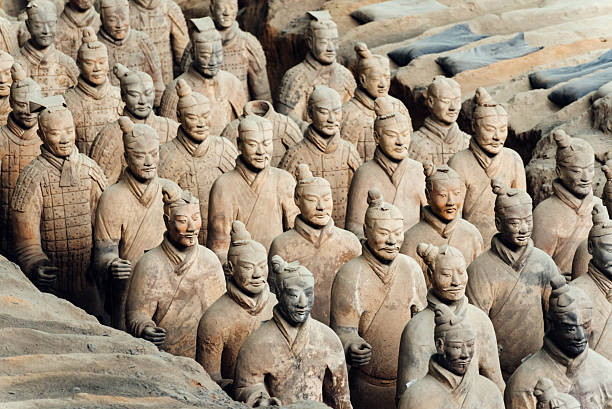
https://www.istockphoto.com/ 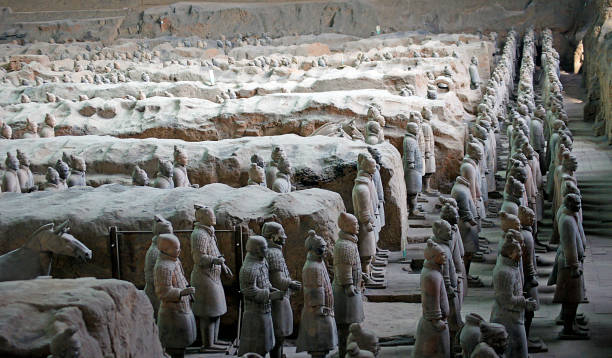
https://www.istockphoto.com/


















